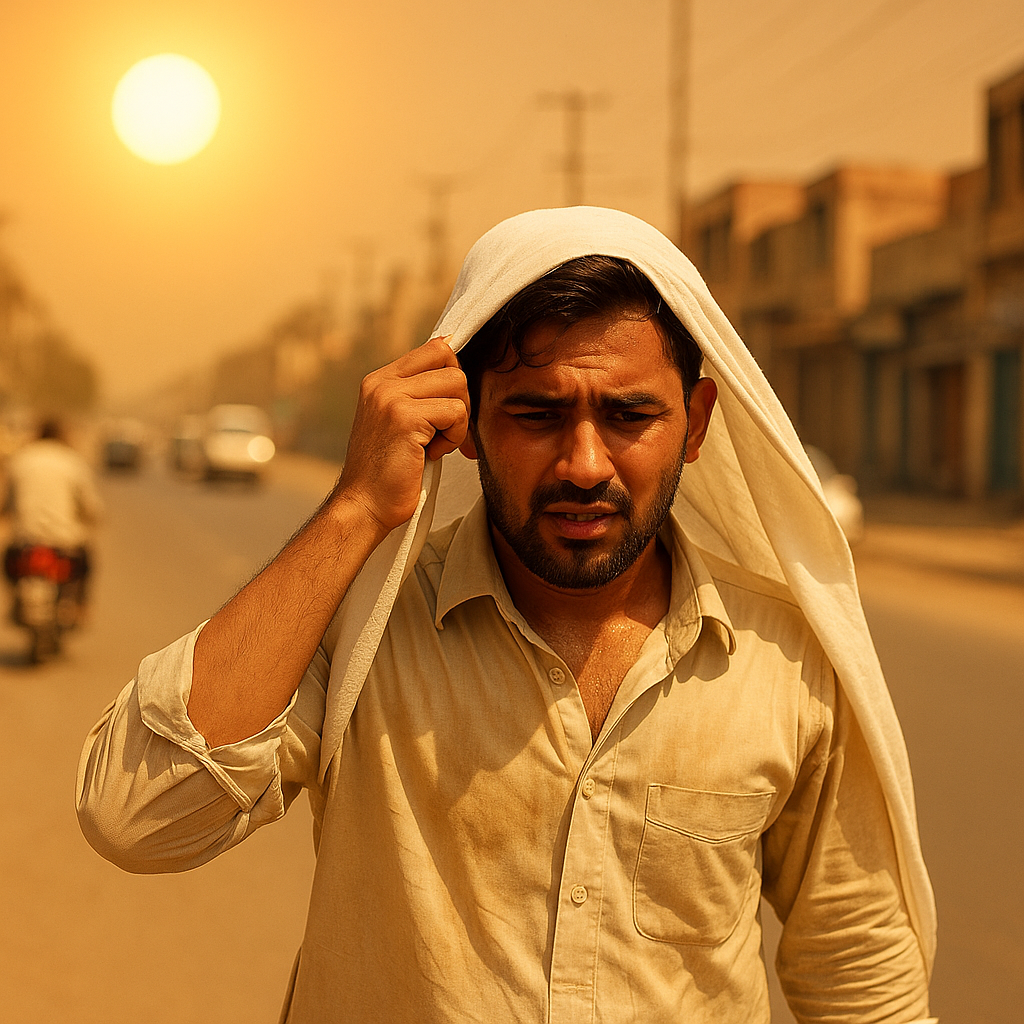Lahore: According to the Provincial Disaster Management Authority (PDMA), Punjab’s heatwave is still going strong and is expected to last until Thursday, June 12. The public’s health and safety are at serious risk as temperatures continue to rise 4°C to 7°C above normal, according to confirmation from authorities on Monday.
Dangerous Temperatures Across Punjab
The region is experiencing dangerously high temperatures as a result of the heatwave. At a scorching 47°C on Monday, Sargodha recorded Punjab’s highest temperature.
Not far behind are other cities. Daytime highs in Lahore, Multan, and Faisalabad were approximately 45°C. Temperatures between 40°C and 42°C were reported in a number of other districts, including Okara, Layyah, Sahiwal, Toba Tek Singh, Mandi Bahauddin, Kasur, and Khanewal.
The region that seems to be suffering the most is southern Punjab. Particularly during the hottest parts of the day, cities like Dera Ghazi Khan, Bahawalpur, Rahim Yar Khan, and once more Multan are experiencing unrelenting heat with little respite.
Glacier Melting Alert for Gilgit-Baltistan
Gilgit-Baltistan has also drawn criticism from the Pakistan Meteorological Department (PMD). Over the next few days, officials anticipate a 5°C to 7°C increase in regional temperatures. This abrupt increase could hasten glacier melting, increasing the risk of natural disasters like flash floods.
PDMA Activates Emergency Response and Issues Public Advisory
PDMA Director General Irfan Ali Kathia has ordered all departments and district authorities to stay on high alert.
Emergency teams are working to:
- Provide clean drinking water to drought-affected areas like Cholistan.
- Operate heatstroke counters in all public hospitals.
- Distribute and stock essential heat-related medicines.
Social media platforms have been used to post public warnings. These warnings draw attention to the grave dangers of heat-related illness, particularly for young people, the elderly, and people with long-term medical conditions.
PDMA urges everyone to:
- Avoid going outdoors during peak heat hours between 10 a.m. and 4 p.m.
- Wear loose, light-colored cotton clothing to stay cool.
- Stay hydrated by drinking water regularly, even if you don’t feel thirsty.
- Look out for signs of heat exhaustion, including dizziness, rapid pulse, nausea, and fainting.
If any of these symptoms appear, citizens should immediately call the PDMA helpline at 1129.
Pakistan’s Climate Continues to Warm at an Alarming Pace
A more significant and concerning trend in the climate is reflected in this ongoing heatwave. Pakistan experienced its ninth warmest year on record in 2024, according to the recently published Economic Survey 2024–25.
The survey shows:
- The national average temperature climbed to 23.52°C, which is 0.71°C higher than the long-term average.
- July 2024 ranked as the second-hottest July in 64 years, with temperatures 1.26°C above average.
- October 2024 broke all previous records, becoming the hottest October ever with a 2.48°C increase over the norm.
Final Thoughts: Stay Vigilant, Stay Cool
Public cooperation is essential during Punjab’s extreme heatwave. Heatstroke, dehydration, and even death are being prevented by PDMA and other emergency services.
Every citizen needs to contribute. Keep yourself informed, safeguard your health, and give children, the elderly, and people with illnesses extra attention.
Steer clear of outdoor activities, stay hydrated, and dress appropriately. Instead of being reactive, take the initiative.
Being ready for the heat will become essential to survival in Pakistan as climatic patterns continue to change. Let this heat wave be a reminder to both people and organisations.
